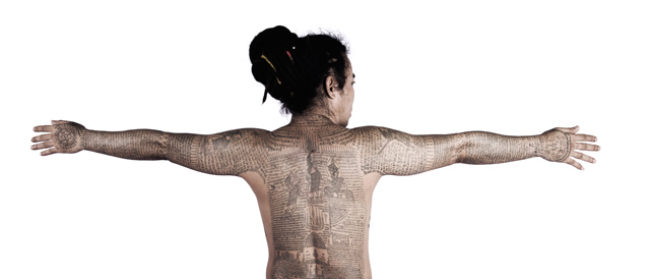Despite some teething problems, Bangkok’s newest art venue looks set to raise the profile of arts and culture among the Thai people.
When the Bangkok Art and Culture Centre (BACC) hosted its first international art exhibition at the end of last year, it received critical acclaim at home and abroad. Its exhibition, Traces of Siamese Smile: Art + Faith + Politics + Love, exhibited works by 108 artists and brought together about 300 creations.
With its magnificent 11-storey building in the middle of downtown Bangkok, the BACC has all the potential to become one of southeast Asia’s leading contemporary art venues. So what’s it been like this past six months?
“There have been a lot of teething problems in terms of staffing and access to operational funding,” says Steven Pettifor, the publisher of the Bangkok Art Map. According to him, these factors have hindered a regular exhibition schedule. Chatvichai Promadhattavedi, the BACC’s acting director, says that Bangkok’s city council has provided about 100m baht ($3m), but some of that money is being held up because of a delay in setting up the administration. However, he hopes that “as an institution to be run independently from the state and yet supported by the bureaucracy, the BACC could create resources from the public and private sectors”.
Thavorn Ko-udomvit, director and curator of Ardel, a gallery in Bangkok, thinks the problem revolves around BACC’s independence and conflicts over how art should be managed. “Their understanding of art is different,” he says of the councillors. In his opinion they should be more supportive of the foundation administering the BACC.
The establishment of an art centre in Bangkok as the main art venue in Thailand had been under discussion since the early 1990s. Monvilai Rojanatanti researched the topic in a 2004 graduation paper. One of her points was that most of Thailand’s museums are attached to universities and frequented only by its members, professional artists and people employed in the business, not by the public at large. She questioned why Thai people didn’t visit museums and galleries. The answer turned out to be a very Thai one: shopping.
“Let’s face it, Thais love to eat and shop – it’s part of our culture,” says Chatvichai. Therefore, to encourage a wider audience to visit BACC, shops, restaurants, cafes and book, art and crafts shops are located on the lower four floors of the centre. They not only provide a recreational element but also pay towards the running costs of maintaining the building.
Panada Lerthattasin, director of the Sombat Permpoon gallery, thinks that is a good strategy. Located near the MBK shopping centre and within a three-minute walk of the Skytrain, she believes contemporary art is becoming part of Bangkok’s everyday life. “They don’t need to go to a university anymore or feel uncomfortable when they visit an art gallery,” she says. And that’s exactly what the BACC is trying to achieve.
“It is about redressing the balance, because too many Asian societies chase the economic growth hardware and not enough the learning and culture software,” says Chatvichai. He believes that the impact on the arts market and related cultural industries will come later.
Although the main focus of the BACC is on visual arts it will also support music, literature, theatre, film and design. “Contemporary Thai artists tend to work cross-media,” Chatvichai explains. “Art content and messages get amplified when presented in various disciplines.”
On the lower floors, art colleges have been given room to exhibit their students’ graduation works, showcasing fresh ideas from a new generation of Thai artists. The centre is also planning to provide information on other galleries in Bangkok.
Before doing that, though, it may have to work on improving its public relations. Thavorn thinks it needs to be more universal. He acknowledges that the BACC has helped to raise awareness of contemporary art among university students and, since it is located nearby shopping centres, teenagers. “But its news should reach a larger audience and become more widely known,” he says.
“The perception that I hope people will have is that we are another city that now ‘legitimises’ contemporary art, where you have that kind of landmark for the art,” says Panada. Pettifor also welcomes the BACC as a much-needed addition to Thailand’s art infrastructure. “It has benefitted from travelling exhibitions needing a sizeable space to stage their self-funded international shows, which gives some indication of how well utilised the site could become,” he says.
Thavorn believes in the potential of the BACC to become a leading contemporary arts venue in the region, but makes it conditional on a restructuring of the organisation. “The BACC, Bangkok and private sectors and organisations have to help each other out,” he says.
That, together with Thailand’s human resources – the artists and their terrific skills – would make it a great environment for the centre to thrive in. “Thai people, especially the young, understand contemporary art more than ever,” he says. Watch this space.
The BACC can be found at 939 Rama I Road Wongmai. The nearest Skytrain station is National Stadium. The gallery is open from 10am to 9pm, Tuesday to Sunday, and the library from 10am to 6pm. Admission is free. For more information visit: www.bacc.or.th

